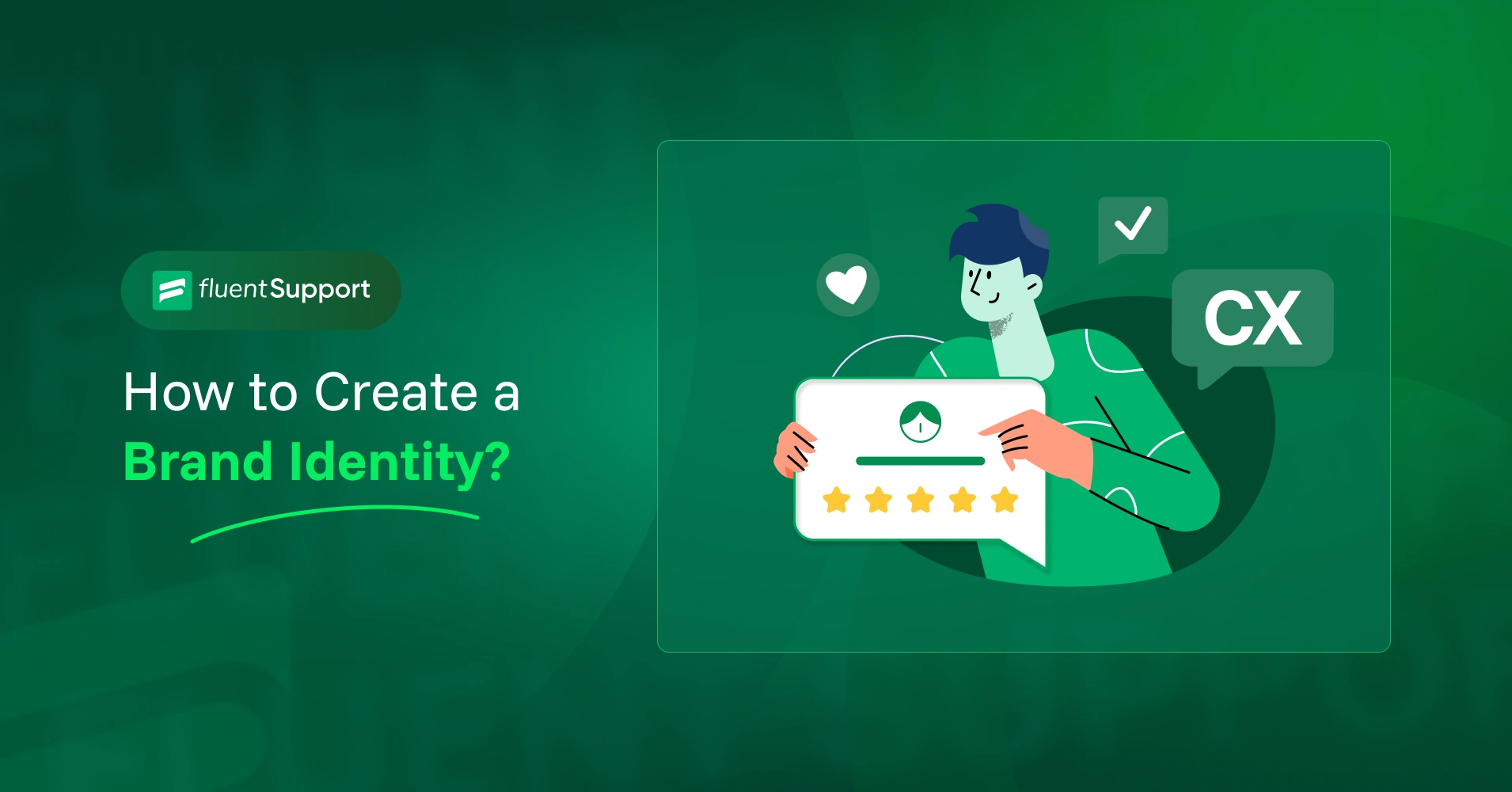
How to Create a Brand Identity? (8-Step Guide)
By Md. Sajid Sadman
August 15, 2025
Last Modified: September 1, 2025
When you hear the words “brand identity,” you probably think of a logo. Maybe a color palette, a font, or a website design. And you’re not wrong. Those things are part of it. But that’s where most people stop. They think a brand is just the face of a company.
The truth is, a great brand identity is so much more. It’s not just what you show to your customers; it’s what you do for them. It’s a promise you make in every conversation and every experience. A logo can get a customer’s attention, but it’s your service that builds trust and keeps them coming back.
This guide isn’t about picking the perfect visuals. It’s about building a powerful brand identity from the inside out, using your customer’s experience as your most important tool.

What is brand identity?
Brand identity is how a company shows itself to customers through its visual elements and its service experience. It includes things you can see, like logos and colors, but also things you feel, such as its tone, personality, and values. A strong brand identity makes your business memorable, sets it apart from others, and builds trust through consistent, positive experiences.
This is the complete picture customers have of your business. It’s the mix of your logo and website design with the feelings you create in people. Think of it as a plan for your whole business. When what people see and what they feel are aligned, they create a strong and clear brand. This is what builds recognition and turns a one-time customer into a loyal fan.
8-step guide on how to create a brand identity that people will remember
To create a strong brand identity, first define your service’s personality, voice, and audience. Then, engage with customers and use their feedback to create a consistent brand presence. Finally, turn your values into a service strategy that makes you stand out and delivers unforgettable experiences.
Yes, we will go for a deep dive on this and show you a legit guideline on how to create a brand identity that will be forever in your customer’s head.
So, let’s get started!
1. Brand personality (how your service feels)
Your brand’s personality is the human side of your service. It’s what makes customers feel like they are talking to a person, not a help desk. A branded service is a trusted friend or a calm expert. Defining this from the start helps your whole team know how to act in a way that feels consistent.
How to make it happen:
Expert insights:
The best brands don’t just make up a personality; they find it. Look at your team’s best traits and use those to build your brand personality. This makes it feel real and true.
Brands in practice:
Chewy, the online pet supply retailer, built its brand around a compassionate personality, famously sending handwritten sympathy notes to customers who have lost a pet. That’s brand identity in action, creating an emotional connection that goes far beyond a typical purchase.

2. Brand Voice (how you talk to customers)
Your brand voice is the same way you talk across all channels. Your tone can change, but your voice should always sound the same. A strong voice builds trust, making your brand feel like an old friend. This helps your customers know what to expect every time.
How to make it happen:
Expert insights:
Your brand voice is not just about words; it’s about what you don’t say. Create a list of phrases or jargon that are forbidden. This forces your team to be creative and sound more human.
Brands in practice:
Wendy’s has dominated social media with its distinct, witty, and sometimes sarcastic voice. When a customer tweets at them with a complaint, they often use humor to diffuse the situation, making the brand feel personable and fun while still providing a solution.

3. Target Audience (for the right people)
You can’t build a great brand without knowing who you are talking to. A generic brand tries to help everyone and ends up helping no one. A smart brand makes its whole service for a specific group of people. This makes your help more useful and effective.
How to make it happen:
Expert insights:
To really get to know your audience, don’t just talk to happy customers. Spend time talking to unhappy ones. They will give you the deepest insights into what your brand is missing and how you can fix it.
Brands in practice:
USAA, the financial services company that focuses exclusively on military members and their families. Their entire brand identity and service model are tailored to this audience, with representatives who understand the unique challenges of military life. This hyper-focus creates a level of trust that a general bank could never achieve.
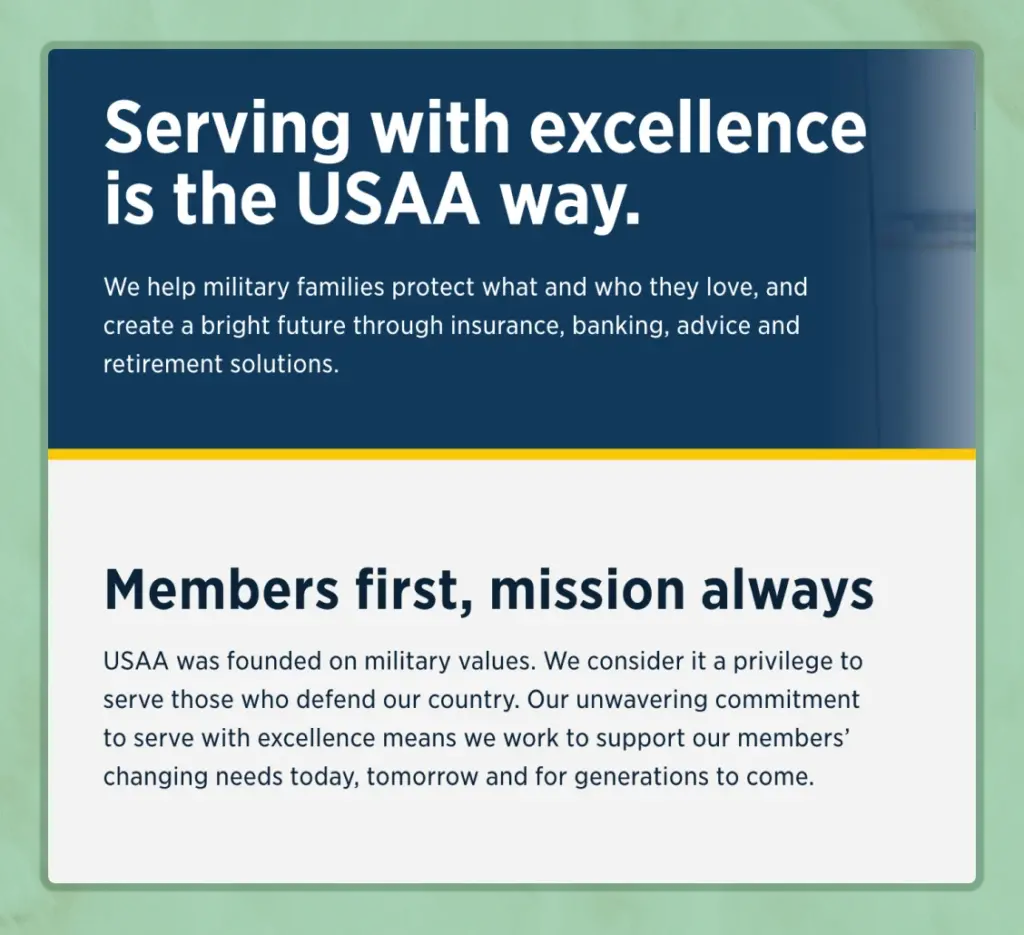
4. Brand Presence (be where customers are)
Your brand is built in the places where your customers spend time, not just on your website. A good brand is active and gives value before being asked. This makes your brand more visible and shows you care.
How to make it happen:
Expert insights:
Go beyond just answering questions. Create a brand moment by giving a small, helpful tip in a community forum that is not directly related to your product. This builds trust without looking like a sales pitch.
Brands in practice:
Look at how Xbox Support does this. Instead of just using their main brand account, they created a dedicated Twitter handle, @XboxSupport, just for customer support. This makes it easy for customers to get help and shows that Xbox is serious about being present and responsive in the channels where its audience is most active.
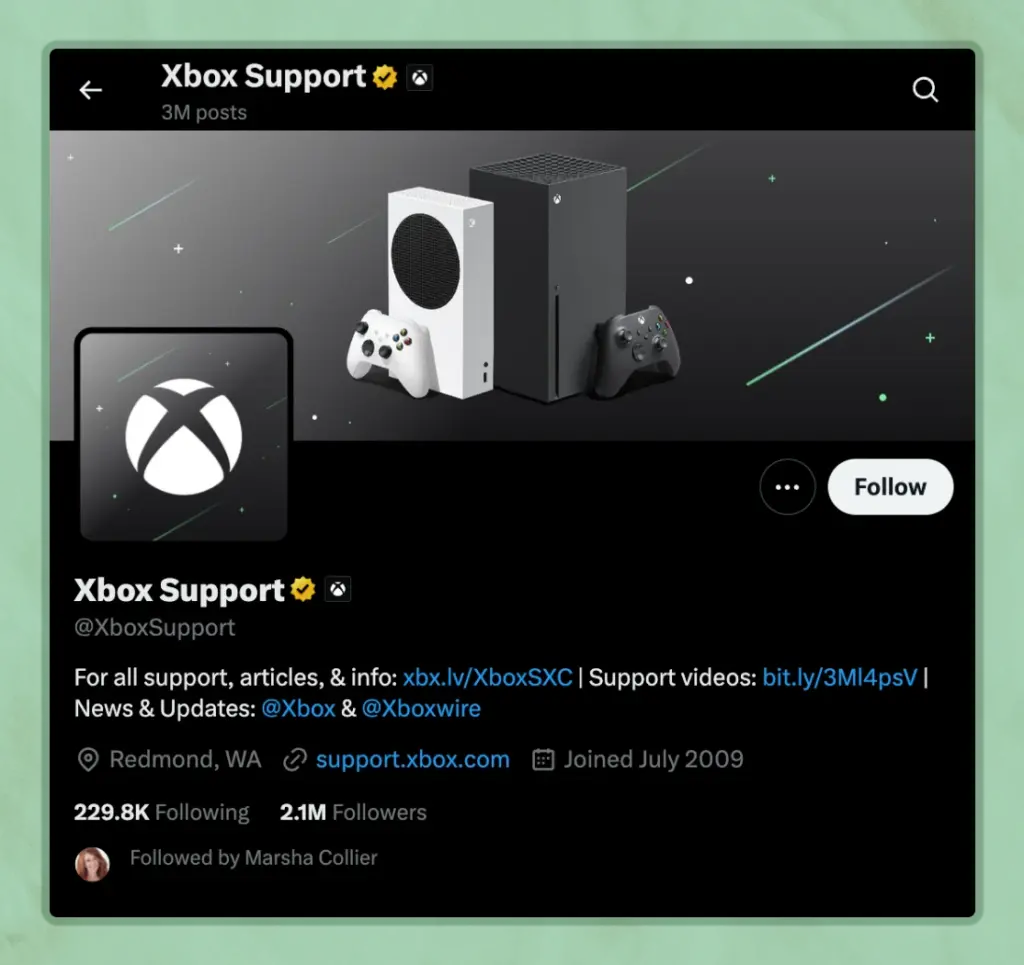
Just a heads up: You can make your customer support team present for your customers when they need you most. It’s easy to do with Fluent Support, and it’s really efficient.
5. Use Feedback: A Big Advantage
Smart companies see feedback as a treasure. A good brand uses that information to make itself better and to show that it is listening. By always asking for and using feedback, you build a brand that is trusted and always improving.
How to make it happen:
Expert insights:
You can use a customer’s feedback to make your next product better. By looking at tickets and feedback, your support team can give your product team a clear list of what customers want and need.
Brands in practice:
Apple takes customer feedback so seriously that store managers call detractors within 24 hours of receiving a negative NPS (Net Promoter Score) review. This practice generates crucial data while also building an incredibly loyal brand identity by showing that every customer’s voice is heard.
6. Brand mission and values (turn words into actions)
Your brand’s mission and values are not just words. They are the rules that guide your team’s choices every day. A strong brand’s values are the heart of its service. When your team lives these values, your brand becomes real and honest.
How to make it happen:
Expert insights:
Empowering your front-line team with a “service budget” is a powerful way to show you trust them. It leads to incredible customer moments that no rigid system could ever create.
Brands in practice:
The Ritz-Carlton’s mission is to “know the secret needs of our guests.” To do this, every employee is empowered to spend up to $2,000 to resolve a guest’s issue without needing manager approval. This is how they’ve built a brand identity synonymous with luxury and impeccable service.
7. Differentiating from competitors (your service is your secret weapon)
Most companies compete on price or features. A smart brand competes on experience. This is a special advantage that is hard to copy. By making a unique promise about your service, you give people a clear reason to choose you.
How to make it happen:
Expert insights:
Your unique service promise doesn’t have to be about speed. It could be about expertise. For example, “Every support ticket is answered by an engineer who helped build the product.” This is a powerful and unique promise.
Brands in practice:
Zappos’ most powerful brand differentiator wasn’t its shoes; it was its service. Their core promise was to “Deliver WOW Through Service,” which included free shipping both ways and a 365-day return policy. This promise became their most effective marketing tool and a key part of their brand identity.
8. Brand Strategy (make service a main part of your business)
Your service plan must be a main part of your whole business plan, not just an afterthought. A basic brand fixes problems. A good brand uses service to build loyalty and grow. By making service part of your main plan, you make sure your brand is always true to its promise.
How to make it happen:
Expert insights:
Use customer service data to build your next product. By analyzing tickets and feedback, your support team can give your product team a clear list of what customers want and need. This makes your service not just a department, but a source of innovation.
Brands in practice:
The Starbucks Rewards Program is a great example of this. With over 26 million members, the program drives loyalty by giving customers “Stars” for every purchase. This point-based system encourages repeat business.
Starbucks also uses this data to send personalized offers, like a discounted iced coffee to a customer who buys it often. All of this is connected through their mobile app, which lets you order ahead and pay easily.
This smart service makes customers feel valued and keeps them coming back, which is a main reason the company grows.
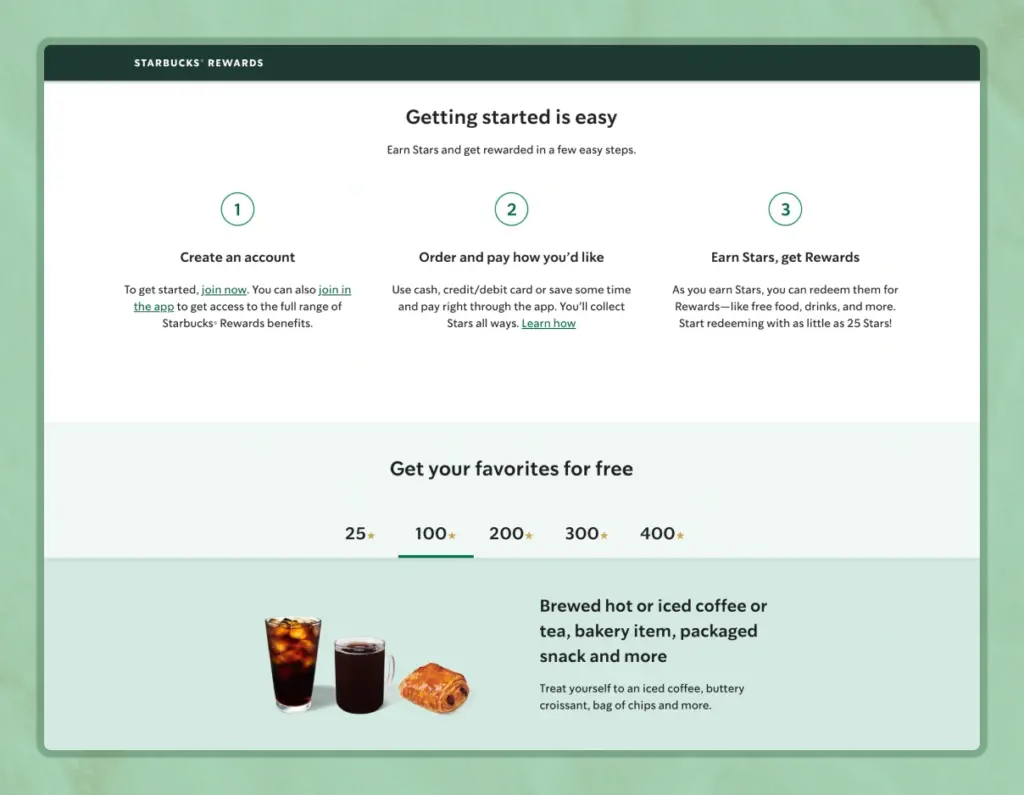
Why is creating a strong brand identity isn’t optional anymore?
Today, having a strong brand identity is not just a nice thing to have. It’s a must!
Think about your own experience. In a crowded marketplace, where many products are the same, your brand is what makes you different. It’s what turns a new customer into a loyal fan. This isn’t just about good marketing; it’s about building a business that stands the test of time.
So, why is this so critical for your business? A service-driven brand identity:
Builds unshakeable trust:
When your service is always good and honest, you build trust that no ads can buy. This trust creates a feeling of safety and reliability for your customers. It’s the ultimate way to keep them coming back, knowing you’ll always have their back.
Creates a competitive advantage:
Your competitors can copy your products, but they can’t copy your team’s culture or the experience you deliver. Your unique service becomes a special advantage that is nearly impossible to imitate, giving you a powerful edge in the market.
Generates powerful word-of-mouth:
When you consistently give an amazing experience, customers don’t just stay with you. They become your biggest advocates. They share their positive stories with friends, family, and on social media, which brings in new customers for free. This is the most powerful growth engine there is.
Boosts Employee Morale:
A clear brand identity gives your team a shared goal and a purpose to their work. When employees know exactly what your brand stands for, they become more engaged and excited to deliver great service, creating a virtuous cycle of excellent experiences.
Wrapping up
Ultimately, your brand identity isn’t just a thing you create and forget. It’s a living, breathing promise you deliver with every customer interaction.
Think of your logo as the face of your brand, but your service is its heart and soul. By building your brand with a customer-first approach, you’re not just getting fans; you’re building a loyal army of people who trust you.
And in a world of endless competition, that kind of trust is the ultimate superpower.
So now you have the blueprint for how to create a brand identity that truly connects. It’s your time to make it happen.
Lastly, I appreciate your time reading this blog.
Start off with a powerful ticketing system that delivers smooth collaboration right out of the box.





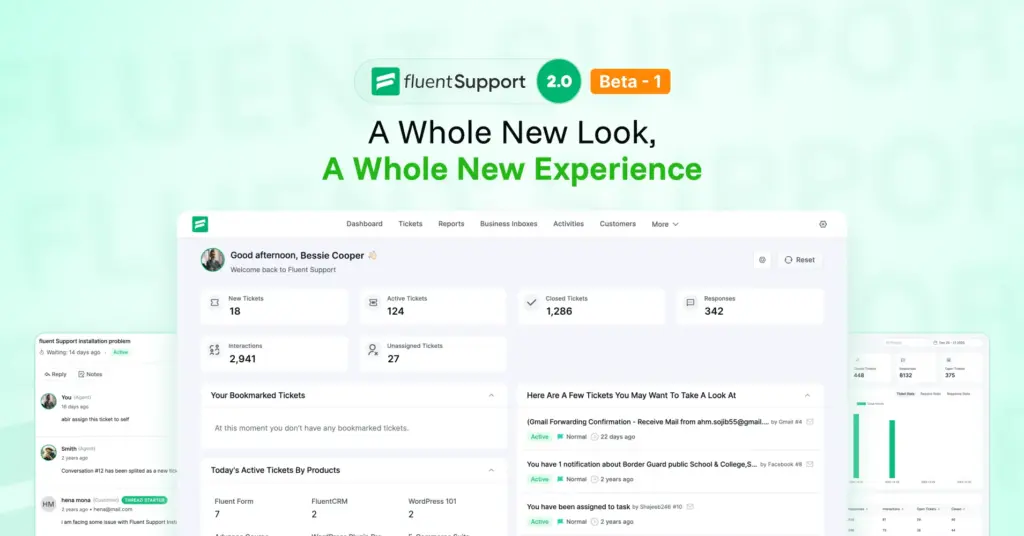



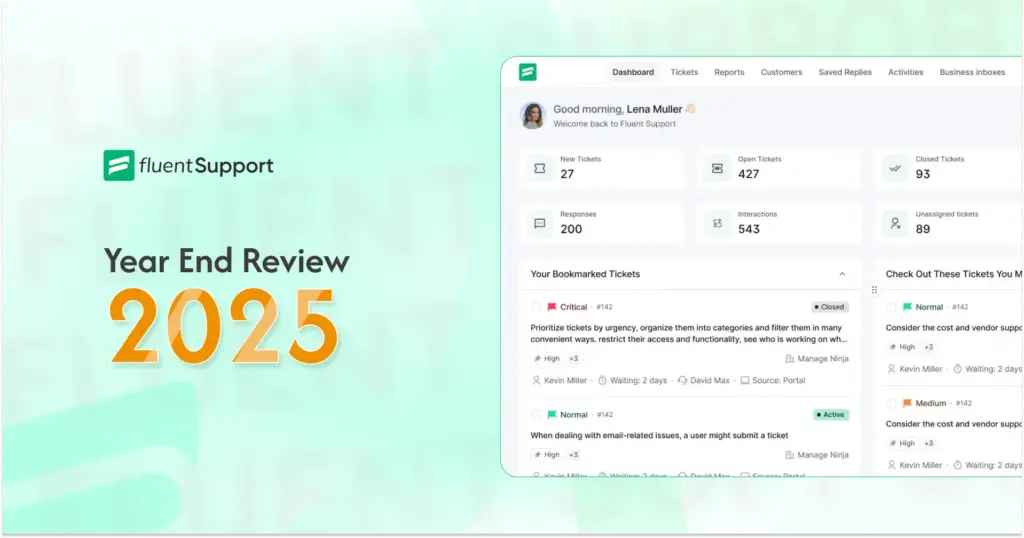
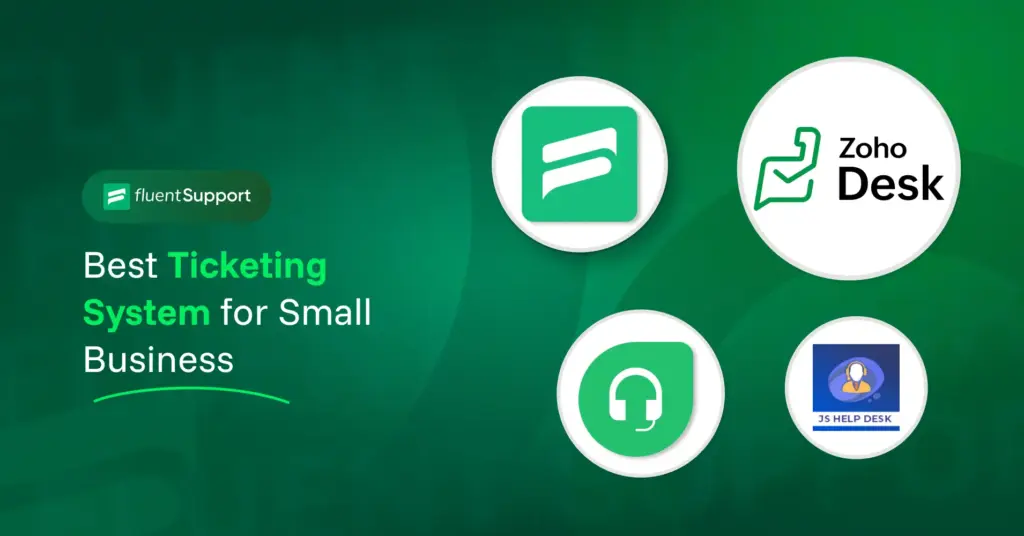
Leave a Reply